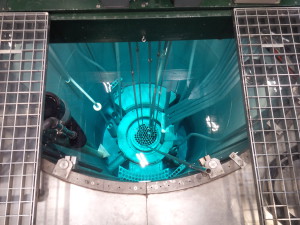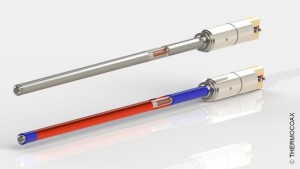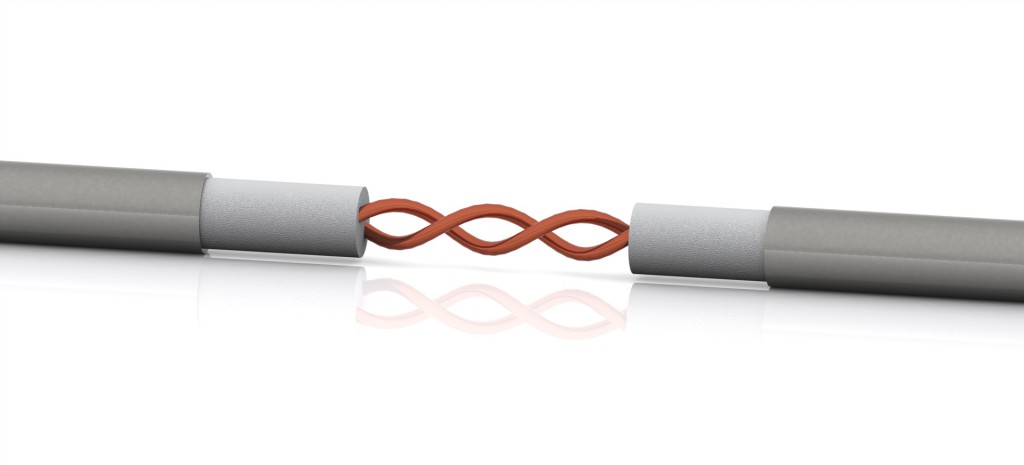Introduction
Neutron flux mapping is key for research reactors operators. Over years this mapping can change from the theoretical configuration and a requalification of the in pile neutron flux can be required to maintain a safe operation and the expertise in reactor physics.
The challenge : develop an efficient and cost effective solution for neutron flux measurement for research reactor.
GENERAL ATOMICS designed the TRIGA reactor in the 50s and it became the most important research reactor fleet in the world.
THERMOCOAX has been awarded a contract to develop a neutron flux monitoring system for a TRIGA reactor in Malaysia.
Based on this successful experience, THERMOCOAX is now offering to market the NEUTROCOAX system, developed with the assistance of SCK.CEN in BELGIUM.
The benefits of NEUTROCOAX® system : a modular and real time solution for neutron flux measurement.
Activation dosimetry is a well-established and accurate method but it is not offering an online data acquisition but only “a posteriori” information on neutron flux.
Based on NEUTROCOAX SPND (Self Powered Neutron Detector) our solution iuses a robust, simple, self-powered and cost-effective sensor compared to other technologies associated with the state-of-the-art data acquisition system.
NEUTROCOAX SPND generates a current proportional to the reactor power.
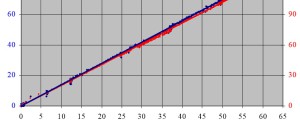
Recorded Currents of Vanadium SPNDs (nano Amperes) versus reactor power (MW). Test performed in BR2 reactor (SCK.CEN)
SPND is directly immersed in the reactor pool to do an in situ measurement. 4 x SPND are supplied as standard, but more SPND can be connected.
The NEUTROCOAX® system comprises SPND associated with a data acquisition system and a measurement Display Unit.
It offers a measurement on a wide spectrum ranging from 0.05% to 100% of the reactor power (i.e. 6.109 to 2x 1013 nv in the specific TRIGA in Malaysia) and a real time visualisation of the measurement. There is no upper limit in terms of neutron flux, and the SPND signal remains linear with the reactor power (see curve above).
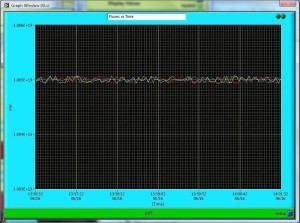
Fluxes versus time as seen on the display unit
This versatile system can also be used to monitor irradiation samples during material test irradiation or radio medical isotope irradiation.
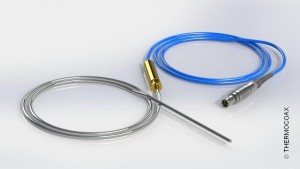
SPND cabling from the sensitive head to the junction box
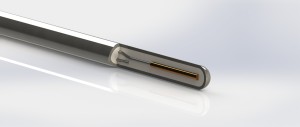
SPND sensitive head. Vanadium emitter. Small Outer diameter of 3.7 mm
THERMOCOAX and nuclear sensors
THERMOCOAX Nuclear specialised in In-core and Ex-core sensors such as :
- Radiation sensors (neutron flux & gamma flux)
- Temperature measurement
- Level and flow measurement
We also offer SERVICES such as DESIGN, EXPERTISE, INSTALLATION, and COMMISIONING.
TRIGA® is a trade mark of GENERAL ATOMIC
SCK.CEN is the Belgian Nuclear Research center. See www.sckcen.be

